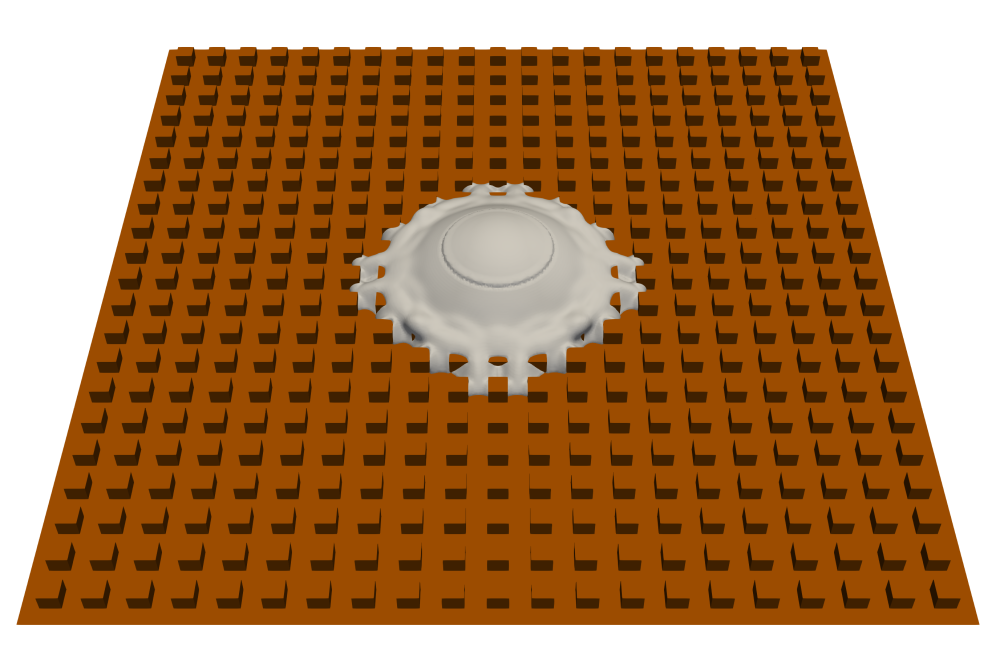Numerical Investigation of Drop Impact, Coalescence and Evaporation on Superheated Surfaces IV
Einleitung
Spray cooling is a very effective method for cooling of electronic devices. The study of the impact of single and coalescing drops onto a superheated wall contribute to a better understanding of the complex hydrodynamics and heat transfer mechanisms during spray cooling. Special consideration is given to the three-phase contact line, where solid, liquid and vapor meet and high evaporation rates are observed. Accurate calculations of the hydrodynamics and heat transfer require large computational effort.
Methoden
The governing equations of the numerical model describe the conservation of mass, momentum and energy for incompressible fuid flow. Heat and mass transfer at the liquid-vapor interface is accounted for in source terms. To track the interface, the volume-of-fluid method is used. A subgrid model accounts for hydrodynamics and heat transport mechanisms on a microscale in the vicinity of the three-phase contact line. The results from this sub-grid model are implemented in the form of correlations in the overall numerical model.
Ergebnisse
The solver is used for two different studies. The first study addresses several drops impacting consecutively centrally onto each other onto a smooth, superheated wall. This scenario is referred to as drop train impact. Next, it has been shown that texturing of the surface can enhance the heat transfer during drop impact. Hence, in a first step, the hydrodynamics during the single drop impact onto a textured wall under isothermal conditions is studied.
Diskussion
During the impact of the drop train the maximum contact line radius increases and both the spreading and receding phases of the drop impact process are prolonged with each consecutive drop impact. After the impact of ten drops the so-called puddle thickness, which describes the thickness of a large sessile drop in case where gravitation dominates, is reached. Just after the impact of the initial drop, the wall temperature decreases to the contact temperature. All further drops lead to a lower decrease in wall temperature compared to the first drop. For our study, the liquid film thickness, formed by the previous impacted drops, has no influence on the wall temperature decrease. By comparing drop train configurations with different drop generation frequencies and drop sizes, but each drop train with the same total kinetic energy and flow rate, it has been shown that large drops impacting with low drop frequency transfer more heat than small drops impacting with high drop frequency. This can be attributed to the drastic changes in Reynolds and Weber numbers. The final drop shape depends only on the total liquid volume and not on the drop train configuration. The study of the single drop impact onto textured surfaces shows that the textures prevent a receding of the drop. This results in a large wetted are over a long time period and hence heat transfer is expected to be high. Additionally, the final liquid height matches the texture height. As a consequence, small and low textures lead to larger wetted areas as large and high textures. Drop impact onto grooves leads to asymmetric drop spreading. The drop spreading in the grooves is driven by capillary forces and follows a power law.




